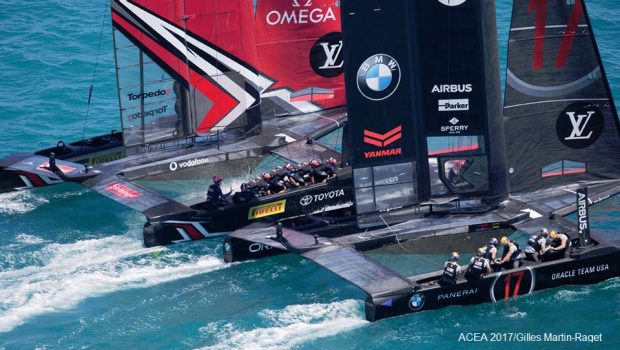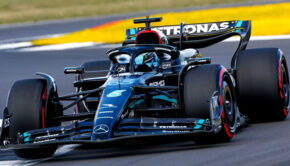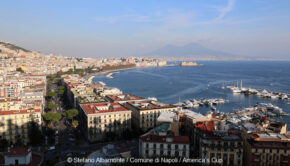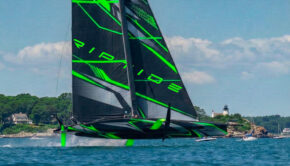Let the Better Technology Win
Published on July 13th, 2017
by Cory E. Friedman
“Give us the tools, and we will finish the job.” – Winston S. Churchill.
I hope Emirates Team New Zealand isn’t paying attention to Scuttlebutt letters to date on the future of the America’s Cup. Their lead mine driver nostalgia for Cups long gone is completely at odds with George Schuyler’s Deed of Gift.
Schuyler never envisioned the AC as match racing as we commonly know it. The Deed set up a match that was a match between technologies and only incidentally between sailors, who were hired help and presumed to be competent. As my friend John Rousmanier cogently explains, the match was between the British type boat, narrow and deeply ballasted, and the American type, wider and shallower, with provision for sliding keels.
From the beginning it was a technology race, as the superior design and cotton sail technology on the original America saw off the British fleet to take home the Cup. That technology race reached an apogee in Reliance 1903, a 200-foot behemoth ridiculed by sailors of the day as a dangerous freak that had nothing to do with yachting as it was known.
Reliance had so much cutting edge technology that its dissimilar metals produced so much galvanic action when exposed to salt water (its inherent vice eventually ate it up) that if one had attached positive and negative poles it probably would have put out more wattage than the kiwi cyclors. The huge deltas of those days show how little match racing was involved.
The technology match continued into the J Class era with aluminum masts and a host of cutting edge technologies. That technology match continued after the 12 Metre revival in 1954 as the New York Yacht Club hoarded and exploited American superior sail and other technology to insure American dominance and a lot less real match racing than nostalgic memories recall.
Eventually the Aussies took the Cup away with the technologically superior winged keel, thanks to a little out-of-the box thinking about the class rule. The 82-foot IACC era (1992 and 2007) was dominated not by superior match racing, but by faster boats, as for example Alinghi seemed to have another gear upwind.
In 2010, the 33rd America’s Cup was a pure technology match, bringing the event back to its roots as Oracle’s 90 foot behemoth was a 21st century version of Reliance. AC 34 in San Francisco continued the Cup’s history as a technology match. Oracle’s superior design and technology eventually overcame its mismanagement and cheating to best New Zealand once the team learned how to sail their faster boat.
Throughout the history of the Cup, technology has never moved backward. Winners have always been cutting edge and often embodied out of the box thinking. There was little real match racing and, except in the 12 Metre era, little role for amateur trust fund baby crews in Bermudas and polo shirts.
The recently concluded AC 35 was another huge leap forward in technology in which the match was won by superior technology. As Elaine Bunting concisely lays out, Kiwi systematic design superiority bested AUS/USA complacence. While the other teams negligently kicked the concept of cyclors around in conference rooms and rejected it without ever trying it out, ETNZ had the good sense to actually see if it would work.
The cyclors were not hamsters as the couch potato commentators dismissively jape, but an elegant world class innovation from which victory flowed — as well as world class athletes. They made ETNZ’s control superiority possible, as well as actively sailing the boat as hand grinders couldn’t.
Much of the criticism of the actual racing missed the point. As soon as a split screen of the boats immediately after one of the starts was shown, it was obvious that Glenn Ashby was trimming by wing twist rather that mainsheet. In the 5 day hiatus, Kyle Langford tried to learn how to duplicate that trim, but inferior control systems made that impossible to execute at ETNZ’s level.
Match racing and close racing were actually well represented. The last race was quickly lost when AUS/USA couldn’t respond to ETNZ’s first gybe while the boats were very close. Several races in the play-offs were decided by protests. If the boats weren’t close, how were protests upheld?
In the final races of the Match, challenger helm Peter Burling cleverly played the shifts as other crew members flew the boat and used classic covering with great effect. Clearly, the naysayers were not paying attention just as they weren’t paying attention to wing trim.
I, for one, found the event hugely entertaining. It was a celebration of youth and athleticism. Rather than being hamsters, the sailors were doing exactly what Olympic athletes do, as their heart rates demonstrated. The cyclors could pedal and chew gum as they manned controls.
The fact that it was a competition won by superior technology is not meant to downplay the achievement of ETNZ’s sailors. Lead by Glenn Ashby and Peter Burling, they are all the heirs of Charlie Barr. ETNZ’s design team is the heir of Nathanael Greene Herreshoff.
Hopefully, ETNZ will carry the technology forward — not backward — and AC 36 will again be a technology match between nations giving great sailors the tools for great racing. There is plenty of real match racing in identical boats in other series elsewhere for those who want it. Let the better technology win.









 We’ll keep your information safe.
We’ll keep your information safe.